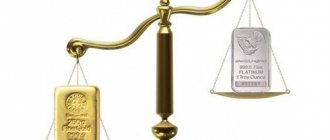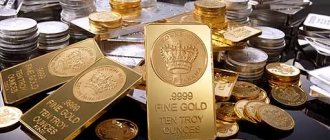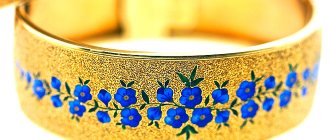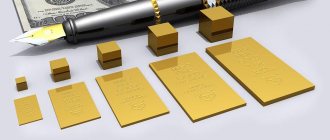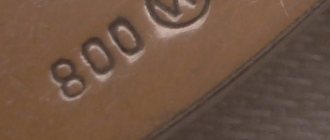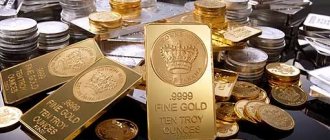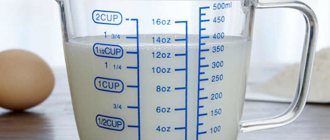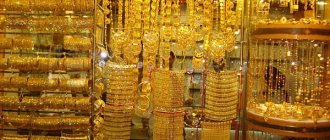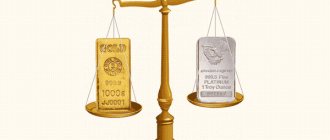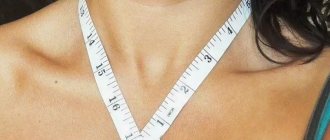Very often a problem arises such as the need to convert ounces to ml: we are talking about liquid ounces. Why might it be necessary to convert one quantity into another, and what are they? Is this unit of measurement still used today and where did it come from?
A fluid ounce is a unit of volume typically used to measure liquids. It is approximately equivalent to 30 milliliters. Many definitions of this unit of measurement have been used throughout history, but in the modern world only two remain in common use, in England and in the USA.
Volume matching
In the UK, a fluid ounce is 1/20 of a pint, or 1/160 of a gallon. If you convert this ounce into milliliters, it will be 28.4. A fluid ounce in the United States is equal to 1/16 of a pint and 1/128 of a gallon. There are many different ounces, most of which are a unit of mass measurement, the fluid ounce is different from them. Sometimes the specification of which ounce is meant is omitted, and one often finds the name simply "ounce" in relation to any of these quantities. What we are talking about usually becomes clear from the context.
Volume units
Cubic meter
The SI unit of volume is the cubic meter. The standard definition of one cubic meter is the volume of a cube with edges one meter long. Derived units such as cubic centimeters are also widely used.
Liter
The liter is one of the most commonly used units in the metric system. It is equal to the volume of a cube with edges 10 cm long: 1 liter = 10 cm × 10 cm × 10 cm = 1000 cubic centimeters
This is the same as 0.001 cubic meters. The mass of one liter of water at a temperature of 4°C is approximately equal to one kilogram. Milliliters, equal to one cubic centimeter or 1/1000 of a liter, are also often used. Milliliter is usually denoted as ml.
Jill
A restaurant specializing in seafood in Nara, Japan
Gills are units of volume used in the United States to measure alcoholic beverages. One jill is five fluid ounces in the British Imperial system or four in the American system. One American jill is equal to a quarter of a pint or half a cup. Irish pubs serve strong drinks in portions of a quarter jill, or 35.5 milliliters. In Scotland, servings are smaller - one-fifth of a jill, or 28.4 milliliters. In England, until recently, portions were even smaller, just one-sixth of a jill or 23.7 milliliters. Now, it’s 25 or 35 milliliters, depending on the rules of the establishment. The owners can decide for themselves which of the two portions to serve.
Dram
Dram, or drachma, is a measure of volume, mass, and also a coin. In the past, this measure was used in pharmacy and was equal to one teaspoon. Later, the standard volume of a teaspoon changed, and one spoon became equal to 1 and 1/3 drachms.
Fluid ounce
The inscription oz is used abroad as a short designation for ounce. You can meet her if you make purchases, for example, at online auctions. Any liquid goods will be measured in ounces: eau de toilette, perfume, aromatic oils, rare liquid spices and more. Naturally, we are talking about purchasing goods from America and Great Britain, as well as countries that are members of the Commonwealth of Nations, for example, Australia and Canada. It is worth noting that when purchasing goods from the USA, a simplified measure is used; an ounce in this case will be equal to 30 milliliters.
Converting ounces to milliliters may also be necessary when trying to use recipes for various dishes. If you come across a cookbook from the UK or Australia, you will know how to convert ounces to milliliters, for example 10 ounces will contain 300 milliliters. Liquid measuring cups are sometimes labeled with the ounce and its fractions. Very often you can find this designation of a volume measure on children's dishes, for example, feeding bottles. A standard 100 ml serving will equate to just over three ounces. This is possible because such a product is produced mainly for the whole world, but milliliters can also be seen on them at the same time.
Therefore, there should be no problem determining the number of milliliters in a fluid ounce. The main thing to remember is that there are several varieties, which can play a significant role when purchasing expensive goods. Interestingly, the United States has already introduced the metric system at the legislative level, but Americans are so accustomed to the existing one that it has not yet taken root.
Volumes in cooking
Liquids in cooking recipes are usually measured by volume. Bulk and dry products in the metric system, on the contrary, are measured by mass.
Tea spoon
The volume of a teaspoon is different in different measurement systems. Initially, one teaspoon was a quarter of a tablespoon, then - one third. It is the latter volume that is now used in the American measurement system. This is approximately 4.93 milliliters. In American dietetics, the size of a teaspoon is 5 milliliters. In the UK it is common to use 5.9 millilitres, but some diet guides and cookbooks use 5 millilitres. The size of a teaspoon used in cooking is usually standardized in each country, but different sizes of spoons are used for food.
Tablespoon of milk
Tablespoon
The volume of a tablespoon also varies depending on the geographic region. So, for example, in America, one tablespoon is three teaspoons, half an ounce, approximately 14.7 milliliters, or 1/16 of an American cup. Tablespoons in the UK, Canada, Japan, South Africa and New Zealand also contain three teaspoons. So, a metric tablespoon is 15 milliliters. A British tablespoon is 17.7 milliliters, if a teaspoon is 5.9, and 15 if a teaspoon is 5 milliliters. Australian tablespoon - ⅔ ounce, 4 teaspoons, or 20 milliliters.
Cup
As a measure of volume, cups are not defined as strictly as spoons. The volume of the cup can vary from 200 to 250 milliliters. A metric cup is 250 milliliters, and an American cup is slightly smaller, approximately 236.6 milliliters. In American dietetics, the volume of a cup is 240 milliliters. In Japan, cups are even smaller - only 200 milliliters.
Quarts and gallons
Gallons and quarts also have different sizes depending on the geographic region where they are used. In the Imperial system of measurement, one gallon is equal to 4.55 liters, and in the American system of measurements - 3.79 liters. Fuel is generally measured in gallons. A quart is equal to a quarter of a gallon and, accordingly, 1.1 liters in the American system, and approximately 1.14 liters in the Imperial system.
Pint
Pints are used to measure beer even in countries where the pint is not used to measure other liquids. In the UK, milk and cider are measured in pints. A pint is equal to one-eighth of a gallon. Some other countries in the Commonwealth of Nations and Europe also use pints, but since they depend on the definition of a gallon, and a gallon has a different volume depending on the country, pints are also not the same everywhere. An imperial pint is approximately 568.2 milliliters, and an American pint is 473.2 milliliters.
8 fluid ounces or 235 milliliters liquid cream tube
Fluid ounce
An imperial ounce is approximately equal to 0.96 US ounces. Thus, an imperial ounce contains approximately 28.4 milliliters, and an American ounce contains 29.6 milliliters. One US ounce is also approximately equal to six teaspoons, two tablespoons, and one eighth cup.
Ounces to Grams Calculator
You convert ounces to grams
Calculator - Weight and Mass - Ounces to Grams
How many grams in ounces - convert oz to gr
1 Ounce (oz) = 28.3 Grams (g)
Ounces An ounce (abbreviation: "oz") is a unit of mass that has several definitions. Often an ounce is equal to 28 grams. Its size may vary in different systems. Today, the most widely used international ounces are avoirdupois, equal to 28.3495231 grams, and troy ounces, equal to 31.1034768 grams.
Grams A gram (symbol: “g”) is a metric unit of mass. One gram is equal to 1/1000 of a kilogram in SI or 1E3 kg. Today, the gram is a widely used unit of measurement for solids in food preparation and in grocery stores around the world.
Conversion of units of Weight and Mass
Convert from
Convert to
oz
=
G
| Basic units of weight | |
| Carat | car |
| Gram | gr |
| Kilogram | kg |
| Milligram | mg |
| Ounce | oz |
| Lb | lb |
| Ton | T |
| Other units of mass | |
| Assarion | assarion |
| Atomic mass unit (Dalton) | A. eat. |
| Attogram | ag |
| Bekah | |
| Centigram | cg |
| Dalton | |
| Dg | dg |
| Dekagram | dag |
| Denarius | denarius |
| Didrachm | didrachma |
| Drachma | drachma |
| Dina | dyn |
| Exagram | Eg |
| Femtogram | fg |
| Hera | gerah |
| Gigagram | Gg |
| Grain | gr |
| Hectogram | hg |
| Hundredweight | cwt |
| Hundredweight(UK) | cwt |
| Kip | |
| Mite | lepton |
| Megagram | Mg |
| Microgram | µg |
| Mine | mina |
| Mina(Biblical Hebrew) | mina |
| Nanogram | ng |
| Pennyweight | pwt |
| Petagram | Pg |
| Picagram | pg |
| Poundal | pdl |
| Quadrant | quadrans |
| Quarter | |
| Quarter(UK) | quarter |
| Quintal | quint. |
| Scruple | scr |
| Shekel | shekel |
| Slug | |
| Stone | st |
| Stone(UK) | st |
| Talent(Greek) | |
| Talent(Hebrew) | |
| Teragram | Tg |
| Tetradrachm | tetradrachma |
| Ton | |
| English ton | |
| Troy ounce | |
| Pharmacist's pound | |
| Basic units of weight | |
| Carat | car |
| Gram | gr |
| Kilogram | kg |
| Milligram | mg |
| Ounce | oz |
| Lb | lb |
| Ton | T |
| Other units of mass | |
| Assarion | assarion |
| Atomic mass unit (Dalton) | A. eat. |
| Attogram | ag |
| Bekah | |
| Centigram | cg |
| Dalton | |
| Dg | dg |
| Dekagram | dag |
| Denarius | denarius |
| Didrachm | didrachma |
| Drachma | drachma |
| Dina | dyn |
| Exagram | Eg |
| Femtogram | fg |
| Hera | gerah |
| Gigagram | Gg |
| Grain | gr |
| Hectogram | hg |
| Hundredweight | cwt |
| Hundredweight(UK) | cwt |
| Kip | |
| Mite | lepton |
| Megagram | Mg |
| Microgram | µg |
| Mine | mina |
| Mina(Biblical Hebrew) | mina |
| Nanogram | ng |
| Pennyweight | pwt |
| Petagram | Pg |
| Picagram | pg |
| Poundal | pdl |
| Quadrant | quadrans |
| Quarter | |
| Quarter(UK) | quarter |
| Quintal | quint. |
| Scruple | scr |
| Shekel | shekel |
| Slug | |
| Stone | st |
| Stone(UK) | st |
| Talent(Greek) | |
| Talent(Hebrew) | |
| Teragram | Tg |
| Tetradrachm | tetradrachma |
| Ton | |
| English ton | |
| Troy ounce | |
| Pharmacist's pound | |
Conversion result:
Other popular mass and weight calculators
- Carat to Gram
- Carat to Kilogram
- Carat to Milligram
- Carats to Ounces
- Carat to Pound
- Carats to Tons
- Gram to Carat
- Gram to Kilogram
- Gram to Milligram
- Gram to Ounce
- Gram to Pound
- Grams to Tons
- Kilogram to Carats
- Kilograms to Grams
- Kilogram to Milligram
- Kilograms to Ounces
- Kilogram to Pounds
- Kilogram to Tons
- Milligram to Carat
- Milligram to Gram
- Milligram to Kilogram
- Milligram to Ounce
- Milligrams to Pounds
- Milligrams to Tons
- Ounce to Carats
- Ounce to Gram
- Ounce to Kilogram
- Ounce to Milligram
- Ounce to Pound
- Ounce to Ton
- Pound to Carat
- Pound to Gram
- Pound to Kilogram
- Pound to Milligram
- Pound to Ounce
- Pound to Tons
- Ton to Grams
- Ton to Kilos
- Ton to Milligrams
- Ton to Ounces
- Ton to Pounds
Volume calculation
Liquid displacement method
The volume of an object can be calculated using the fluid displacement method. To do this, it is lowered into a liquid of a known volume, a new volume is geometrically calculated or measured, and the difference between these two quantities is the volume of the object being measured. For example, if when you lower an object into a cup with one liter of water, the volume of the liquid increases to two liters, then the volume of the object is one liter. In this way, you can only calculate the volume of objects that do not absorb liquid.
LiveInternetLiveInternet
The menus and recipes of American/English diets use their own, non-metric system of measures.
In English cookbooks, the traditional measure of volume is 1 cup. Cup is a cup.
How many grams are in 1 cup? The volumes of cups are not the same in different cuisines. As a measure of volume, cups are not defined as strictly as spoons. The volume of the cup can vary from 200 to 250 milliliters. If in Australia, Canada, New Zealand a cup can be safely equated to a more familiar glass (250 ml), then in the USA the volume of a cup will be equal to 237 ml, and in the UK, where the so-called imperial system of weights and measures is in use, one imperial cup (imperial cup) is already 284 ml. A metric cup is 250 milliliters, and an American cup is slightly smaller, approximately 236.6 milliliters. In American dietetics, the volume of a cup is 240 milliliters. In Japan, cups are even smaller - only 200 milliliters.
Let's see how many grams of various bulk products can be measured in an American cup.
American measuring cup
- 1/4 cup - 60ml
- 1/3 cup – 75ml
- 1/2 cup – 125ml
- 2/3 cup - 150ml
- 3/4 cup - 175ml
- 1 cup – 250ml
It should be noted that measuring cups, for the most part, come in three volumes - 230ml, 240ml and 250ml... apparently that’s why the cup volume differs on different sites :(. Below I present the information that I found on the Internet - what you and I may need , if we decide to try one of the recipes, I think that many of you have encountered the problem of recalculating weight and volume into native grams and milliliters.
Bulk products
Approximately: 1 cup = 240 ml , or 16 tablespoons. There are 15 ml in 1 tablespoon.
- granulated sugar – 200 g
- powdered sugar – 225 g
- sifted white flour – 125 g
- white rice, uncooked – 185 g
- white rice, cooked – 175 g
- vegetable oil – 224 g
- milk – 245 g
- powdered milk – 68 g
- broccoli – 71 g
- raisins – 165 g
- cocoa powder – 128 g
- yogurt – 245 g
- water – 236 g
The volume of non-liquid ingredients specified in American recipes (if it is more than 2 tablespoons or 1 fluid ounce) is calculated using the following table.
Wheat flour[/td]
| Ingredient weights in grams | |||||||
| Ingredient | 1 cup | 3/4 cup | 2/3 cup | 1/2 cup | 1/3 cup | 1/4 cup | 2 tbsp. |
| 120 gr | 90 gr | 80 gr | 60 gr | 40 gr | 30 gr | 15 g | |
| Sifted wheat flour | 110 gr | 80 gr | 70 gr | 55 gr | 35 gr | 27 g | 13 g |
| Granulated sugar (cane) | 200 gr | 150 gr | 130 gr | 100 gr | 65 gr | 50 gr | 25 gr |
| Confectionery sugar (cane) | 100 gr | 75 gr | 70 gr | 50 gr | 35 gr | 25 gr | 13 g |
| Brown sugar | 180 gr | 135 gr | 120 gr | 90 gr | 60 gr | 45 gr | 23 g |
| Corn flour | 160 gr | 120 gr | 100 gr | 80 gr | 50 gr | 40 gr | 20 gr |
| Corn starch | 120 gr | 90 gr | 80 gr | 60 gr | 40 gr | 30 gr | 15 g |
| Raw oatmeal | 90 gr | 65 gr | 60 gr | 45 gr | 30 gr | 22 gr | 11 g |
| Salt (table) | 300 gr | 230 gr | 200 gr | 150 gr | 100 gr | 75 gr | 40 gr |
| Oil | 240 gr | 180 gr | 160 gr | 120 gr | 80 gr | 60 gr | 30 gr |
| Chopped fruit | 150 gr | 110 gr | 100 gr | 75 gr | 50 gr | 40 gr | 20 gr |
| Nuts (chopped) | 150 gr | 110 gr | 100 gr | 75 gr | 50 gr | 40 gr | 20 gr |
| Nuts (crushed) | 120 gr | 90 gr | 80 gr | 60 gr | 40 gr | 30 gr | 15 g |
| Bread crumbs (fresh) | 60 gr | 45 gr | 40 gr | 30 gr | 20 gr | 15 g | 8 g |
| Bread crumbs (dry) | 150 gr | 110 gr | 100 gr | 75 gr | 50 gr | 40 gr | 20 gr |
| Parmesan cheese (grated) | 90 gr | 65 gr | 60 gr | 45 gr | 30 gr | 22 gr | 11 g |
Liquids in cooking recipes are usually measured by volume. Bulk and dry products in the metric system, on the contrary, are measured by mass.
Liquid products
The following table shows the weight of liquid foods in an American cup:
American system of measures for liquids converted to liters and milliliters:
Gallon (gal), gallon - 4 quarts - 3.8 liters Quart (qt), quart - 2 pints - 0.94 liters Pint (pt), pint - 0.47 liters Ounce (oz), ounce - 29.6 milliliters
British Imperial System of Measures for Liquids Fluid (liquid) ounces (fl oz) = 28.4 ml British quart (quart, qt) = 1.140 l = 2 pints = 4 cups British pint (pt) = 0.570 l = 2 cups British gallon (gallon, gal) = 4.54 l = 4 quarts
For ease of conversion, the value of 1 fluid ounce has been rounded to the nearest 300ml. For more accurate calculations, use the formula 1 Huid oz = 28.4 ml (English system) or 1 Huid oz = 29.5 ml (American system).
American system of measures for liquids Liquid gallon (gal), fluid gallon = 4 quarts or 3.8 liters Liquid quart (qt), fluid quart = 2 pints = 0.94 liters Fluid pint (pt), fluid pint = 0, 47 liters Fluid ounce (oz), fluid ounce = 29.6 milliliters
Other weights
In modern British cookbooks, it is no longer even cups that are used (cups today are marked only for cider and ale), but pounds, ounces and pints.. You may have noticed the abbreviation lb - pound .
Pound (lb, lbs), pound, avoirdupois pound - American, English pound - 454 grams 1 pound - 16 ounces.
- 1 ounce (ounce, oz) – 28.34 grams
- 1 fluid oz – 29.57 ml
- 1 gram – 0.035 ounces
- 1 pound (lb) – 0.454 kg
- 1 kg - 2.2 lbs
Weight conversion table
- 1 ounce - 28 grams
- 4 ounces - 1/4 pound - 113 grams
- 1/3 pound - 150 grams
- 8 ounces - 1/2 pound - 230 grams
- 2/3 lb - 300 grams
- 12 oz - 3/4 lb - 340 grams
- 1 pound - 16 ounces - 450 grams
- 2 pounds - 900 grams
American system of mass units Dry quart (qt), liquid quart = 1.1 liters. Dry pint (pt), dry pint = 0.55 liters.
Abbreviations and English names
| Ounce – ounce – oz Pound – pound – lb Cup – cup – with kg. = kilogram | 1 tbs = teaspoon = teaspoon - 5 ml 1 Tb= = tablespoon = tablespoon - 15 ml 2 cups =2 cups or 1 pint 4 cups (4 cups or 1 quart) |
Teaspoon The volume of a teaspoon is different in different measurement systems. Initially, one teaspoon was a quarter of a tablespoon, then - one third. It is the latter volume that is now used in the American measurement system. This is approximately 4.93 milliliters. In American dietetics, the size of a teaspoon is 5 milliliters. In the UK it is common to use 5.9 millilitres, but some diet guides and cookbooks use 5 millilitres. The size of a teaspoon used in cooking is usually standardized in each country, but different sizes of spoons are used for food.
Tablespoon The volume of a tablespoon also varies depending on the geographic region. So, for example, in America, one tablespoon is three teaspoons, half an ounce, approximately 14.7 milliliters, or 1/16 of an American cup. Tablespoons in the UK, Canada, Japan, South Africa and New Zealand also contain three teaspoons. So, a metric tablespoon is 15 milliliters. A British tablespoon is 17.7 milliliters, if a teaspoon is 5.9, and 15 if a teaspoon is 5 milliliters. Australian tablespoon - ⅔ ounce, 4 teaspoons, or 20 milliliters.
Matches:
1 stick = 113.5 g = 1/4 lb = 4 ounces = 1/2 cup = 8 tablespoons = 14 teaspoons
And in English:
1 stick = 113.5 g = 1/4 lb = 4 oz = 1/2 cup = 8 tablespoons = 14 teaspoons
British volume measures are 20% larger than American ones.
The following table provides data for converting liquid volumes
| Volume conversion (data in table is valid for liquids only) | |
| Specified quantity | Metric equivalent |
| 1 teaspoon | 5 ml |
| 1 tablespoon or 1/2 fl oz | 15 ml |
| 1 fl oz or 1/8 cup | 30 ml |
| 1/4 cup or 2 fl oz | 60 ml |
| 1/3 cup | 80 ml |
| 1/2 cup or 4 fl oz | 120 ml |
| 2/3 cup | 160 ml |
| 3/4 cup or 6 fl oz | 180 ml |
| 1 cup or 8 fluid ounces or half a pint | 240 ml |
| 1 1/2 cups or 12 fl oz | 350 ml |
| 2 cups or 1 pint or 16 fl oz | 475 ml |
| 3 cups or 1 1/2 pints | 700 ml |
| 4 cups or 2 pints or 1 quart | 950 ml |
| 4 quarts or 1 gallon | 3.8 l |
| Note: In cases where there is no need for high data accuracy, you can round the values as follows. 1 cup = 250 ml 1 pint = 500 ml 1 quart = 1 L 1 gallon = 4 L | |
Quarts and Gallons Gallons and quarts also have different sizes, depending on the geographic region where they are used. In the Imperial system of measurement, one gallon is equal to 4.55 liters, and in the American system of measurements - 3.79 liters. Fuel is generally measured in gallons. A quart is equal to a quarter of a gallon and, accordingly, 1.1 liters in the American system, and approximately 1.14 liters in the Imperial system.
Pints are used to measure beer even in countries where the pint is not used to measure other liquids. In the UK, milk and cider are measured in pints. A pint is equal to one-eighth of a gallon. Some other countries in the Commonwealth of Nations and Europe also use pints, but since they depend on the definition of a gallon, and a gallon has a different volume depending on the country, pints are also not the same everywhere. An imperial pint is approximately 568.2 milliliters, and an American pint is 473.2 milliliters.
8 fluid ounces or 235 milliliters liquid cream tube
Fluid ounce An imperial ounce is approximately equal to 0.96 US ounces. Thus, an imperial ounce contains approximately 28.4 milliliters, and an American ounce contains 29.6 milliliters. One US ounce is also approximately equal to six teaspoons, two tablespoons, and one eighth cup.
The most accurate recipes are those where ingredients are measured in grams, pounds or ounces. Because different foods have different weights when measured in cups or spoons. However, you can try to describe the most basic ones.
| American spoons and cups | Grams |
| 1 tbs (teaspoon) | 5 |
| 1 Tb (tablespoon) | 15 |
| 1 cup | 227 |
| 2 cups (2 cups or 1 pint) | 454 |
| 4 cups (4 cups or 1 quart) | 907 |
| 62/3 Tb (6 and 2/3 tablespoons) | 100 |
| 1 cup + 1 Tb (1 cup + 1 tablespoon) | 250 |
| 41/3 cups (4 and 1/3 cups) | 1 liter |
| What do we translate where? | Unit measurements | Qty |
| ounces to grams | ounces | 28,35 |
| grams to ounces | grams | 0,035 |
| liters to quarts | liter | 0,95 |
| quatras to liters | quatras | 1,057 |
| inches to centimeters | inches | 2,54 |
| centimeters to inches | cm | 0,35 |
| Cups | Milliliters | Cups | Milliliters |
| 1/4 | 56 | 1+1/4 | 283 |
| 1/3 | 75 | 1+1/3 | 300 |
| 1/2 | 113 | 1+1/2 | 340 |
| 2/3 | 150 | 1+2/3 | 375 |
| 3/4 | 168 | 1+3/4 | 400 |
| 1 | 227 | 2 | 450 |
With this table you can convert ounces to grams. But keep in mind that the ounces in this table are different from those in the table for liquid products.
| Weight conversion | |
| Specified quantity | Metric equivalent |
| 1 oz | 28 g |
| 4 oz or 1/4 lb | 113 g |
| 1/3 lb | 150 gr |
| 8 ounces or 1/2 pound | 230 gr |
| 2/3 lb | 300 gr |
| 12 oz or 3/4 lb | 340 gr |
| 1 pound or 16 ounces | 450 gr |
| 2 pounds | 900 gr |
| Grams | Ounces |
| 25 | 0,87 |
| 30 | 1,00 |
| 50 | 1,75 |
| 75 | 2,63 |
| 80 | 2,80 |
| 85 | 3,00 |
| 100 | 3,50 |
| 125 | 4,40 |
| 150 | 5,25 |
Oil
Americans sell butter not in packs, but in sticks. An American stick of butter weighs ~113 grams, that is, 4 ounces.
1 cup butter = 2 sticks = 8 oz = 227 g
1/4 cup butter = 55 g 1/3 cup butter = 75 g 1/2 cup butter = 115 g
High-grade flour of Ukrainian or Russian production
1 cup = 5 ounces = 144 g
1/2 cup = 2.5 ounces = 72 g
1/3 cup = 1.7 oz = 48 g
1/4 cup = 1.27 oz = 36 g
1/8 cup = 2 tablespoons = 0.63 ounces = 18 g
Important point! A cup of sifted flour will be approximately 8-10g lighter, measuring 134-136g
Inconsistency
Another important point. Americans estimate the weight of a cup of flour to be 128 g. Our product is heavier. Moreover, I weighed both regular, premium flour and superfine flour. That is, when baking according to American recipes, it is worth taking a spoonful of flour from our cup somewhere so that the weight matches.
Granulated sugar of Ukrainian or Russian production
1 cup = 6.9 oz = 195 g
1/2 cup = 3.5 ounces = 98 g
1/3 cup = 2.3 ounces = 65 g
1/4 cup = 1.7 oz = 49 g
Syrups and honey
Thick syrups and honey are significantly heavier than water, which will affect their weight when measured in cups
2 tbsp. spoons – 43 g
1/4 cup – 85 g
1/3 cup – 113 g
1/2 cup – 170 g
1 cup – 340 g
Useful information:
Pud (pood) is an old Russian unit of measurement. 1 pood = 40 Russian pounds or 16.38 kg.
Table of fat percentage in cream
| Cream | |
| Cream type | Fat content |
| Jersey (English version) | 60% |
| Double (English version) | 48% |
| Heavy (American version) | 40% |
| Whipping | 30-60% |
| Single (English) or Light or Table (American) | 18% |
| Half and Half (American version) | 10-18% |
| Half Cream (English version) | 12% |
Converting Fahrenheit temperature to Celsius temperature:
Based on materials from fanilla.ru, sweetmenu.ru, www.translatorscafe.com, etc.
To be honest, I’m a little confused with the American and English systems of measurements in cooking... The more I look for information, the less clear it becomes to me. The further into the forest, the more firewood...
To help you:
